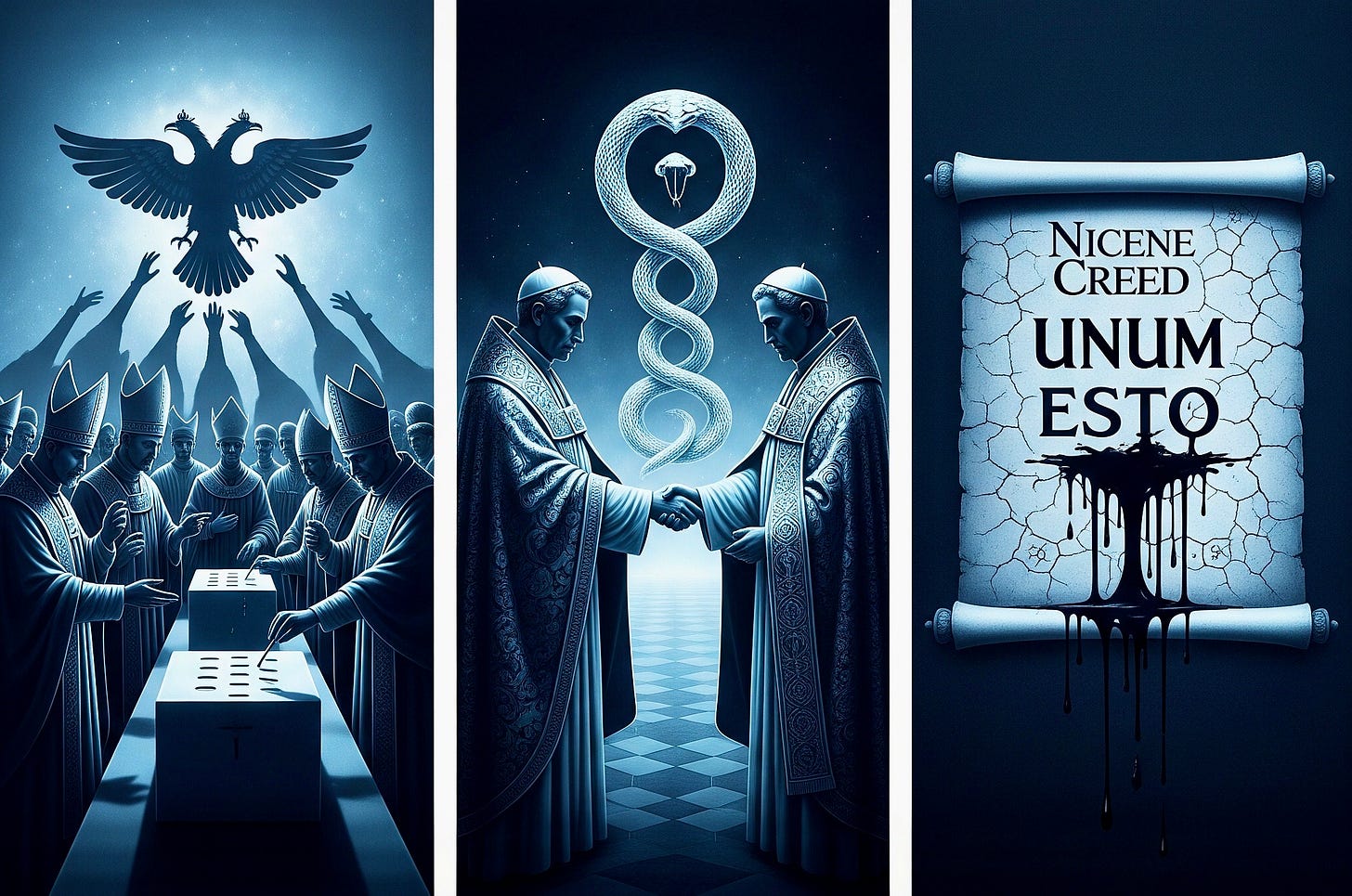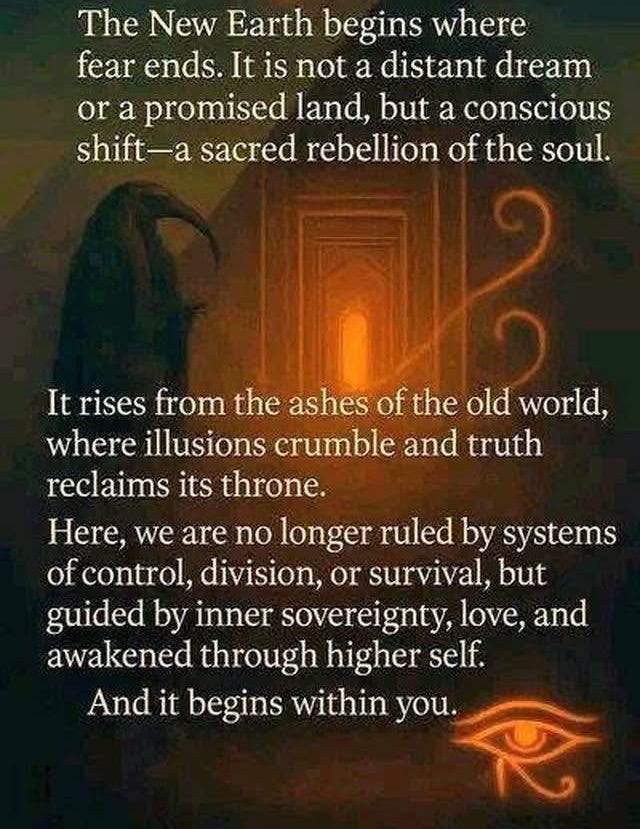The Nicaea Reunion: Pope & Patriarch’s 1,700-Year Occult Pact to Resurrect Christendom’s Lost Unity... Or Trigger Its Final Schism?
As East and West return to the birthplace of the Nicene Creed, hidden symbols, prophetic timing, and a chilling biblical parallel suggest this isn’t just an anniversary—it’s a ritual.
🔥 THE POST: BLOOD, CREEDS, AND THE THRONE OF CONSTANTINE
I. The Occult Geometry of Nicaea
Seventeen centuries ago, 318 bishops (a number mystics link to Genesis 14:14’s armed servants of Abram) gathered under Emperor Constantine—a man baptized only on his deathbed—to force a consensus on Christ’s divinity.
Now, Pope Leo XIV and Patriarch Bartholomew return to the same ruins, not merely to commemorate, but to re-enact.
Why 1,700 Years? In Scripture, 17 symbolizes victory (Noah’s Ark landing on the 17th day) and sins overcome (Joseph’s 17 years in Egypt). But occultists note 1,700 reduces to 8 (1+7+0+0=8)—the number of new beginnings and infinity. Coincidence? Or a numerological trigger?
The Arian Heresy’s Shadow: The Council’s crushing of Arianism (which denied Christ’s divinity) echoes today’s secular post-Christianity. Is this reunion a exorcism—or a surrender?
II. The Hidden Ritual
Buried clues reveal a deeper script:
Same-Day Easter: Francis died hours after the first shared Easter in 8 years (8 = new cycles). His successor, Leo XIV, now inherits the "Nicaea Pact."
Two Lungs, One Beast? John Paul II’s metaphor of East and West as lungs takes on gnostic undertones: reunification as resurrection of the imperial Church.
III. Bible vs. Power
Ecclesiastes 1:9: "What has been will be again." The Council of Nicaea was politics cloaked in theology—then and now.
Machiavelli’s Warning: "Politics have no relation to morals." The Creed unified doctrine, but the Filioque clause split the Church 700 years later. Will history repeat?
🖋️ DUTCH UNCLE LETTER
Let’s cut through the incense smoke. This isn’t just a feel-good anniversary. It’s a coronation.
Here’s what’s really happening:
1. The Constantine Playbook
The first Nicaea was a power grab—Constantine needed a unified Church to stabilize his empire. Today’s leaders? They’re staring down global secularism and collapsing congregations. Reunification isn’t piety—it’s survival.
2. The Occult Timing
2025: The 1,700th anniversary and the lead-up to 2054 (1,000 years since the Great Schism). This is ritual theater—a chronomantic attempt to heal the timeline.
Easter Alignment: Shared Easter (a celestial sign) before Francis’ death? Too neat. Someone is staging synchronicities.
3. The Gnostic Edge
The Creed’s "God from God, Light from Light" mirrors Hermetic "As above, so below" dogma.
Co-opting cosmic duality? Perhaps.
But the Filioque fight proves dogma is always about control.
4. Next Move
Watch the Hands: If they share the Eucharist, it’s a game-changer. If not, it’s PR.
Listen for the Dog Whistles: Any mention of "new evangelization" or "two lungs" means empire-building.
Final Quote:
"When the gods wish to punish us, they answer our prayers." — Oscar Wilde
Here are ten active URL links to news or contextual articles that lend credence to the themes and historical context presented in your blog post:
Nicaea: the council that shaped the West: https://engelsbergideas.com/notebook/nicaea-the-council-that-shaped-the-west/ This article discusses the historical context and lasting impact of the Council of Nicaea, highlighting its role in shaping Christian theology and the relationship between church and state. This relates to your point about the "Occult Geometry of Nicaea" and Constantine's influence.
Pope Leo confirms the meeting with Ecumenical Patriarch in Nicaea is in preparation: https://orthodoxtimes.com/pope-leo-confirms-the-meeting-with-ecumenical-patriarch-in-nicaea-is-in-preparation/ This recent news confirms the planned meeting between Pope Leo XIV and Ecumenical Patriarch Bartholomew in Nicaea, echoing the blog post's premise of a significant contemporary gathering at the same location.
Catholic–Eastern Orthodox relations: https://en.wikipedia.org/wiki/Eastern_Orthodox_Church This Wikipedia page provides a comprehensive overview of the historical and ongoing relationship between the Catholic and Eastern Orthodox Churches, relevant to the blog post's discussion of reunification and the "Two Lungs, One Beast?" metaphor.
Biblical numerology - Wikipedia: https://en.wikipedia.org/wiki/Biblical_numerology This resource explores the significance of numbers in the Bible, providing context for the blog post's interpretation of the numbers 17 and 8 in relation to the anniversary and potential "new beginnings."
Arianism - Wikipedia: https://en.wikipedia.org/wiki/Arianism This page details the Arian heresy and its historical context, which is central to the blog post's discussion of the Council of Nicaea and potential modern parallels in secular post-Christianity.
Constantine – his role at the Council of Nicaea: https://redcrossofconstantine.uk/
This article specifically examines Emperor Constantine's involvement in the Council of Nicaea, supporting the blog post's assertion of the emperor's political motivations.
History of the filioque controversy - Wikipedia: https://en.wikipedia.org/wiki/Filioque This resource outlines the historical development and theological implications of the Filioque clause, a key point of division between East and West mentioned in the blog post.
CNA explains: Why Eastern and Western Easter dates differ — and why 2025 is different: https://www.catholicnewsagency.com/news/263433/cna-explains-why-eastern-and-western-easter-dates-differ-and-why-2025-is-different This article explains the reasons behind the differing Easter dates and highlights the shared date in 2025, the year mentioned in the blog post as significant.
Breathing with Both Lungs - The Deacon: https://www.the-deacon.com/2019/01/01/breathing-with-both-lungs/ This article discusses Pope John Paul II's metaphor of the Church breathing with "two lungs" (East and West), providing context for the blog post's interpretation of this imagery.
Gnosticism - Wikipedia: https://en.wikipedia.org/wiki/Gnosticism This page offers information on Gnosticism, its beliefs, and its relationship to early Christianity, relevant to the blog post's mention of "gnostic undertones" and the "God from God, Light from Light" connection.





